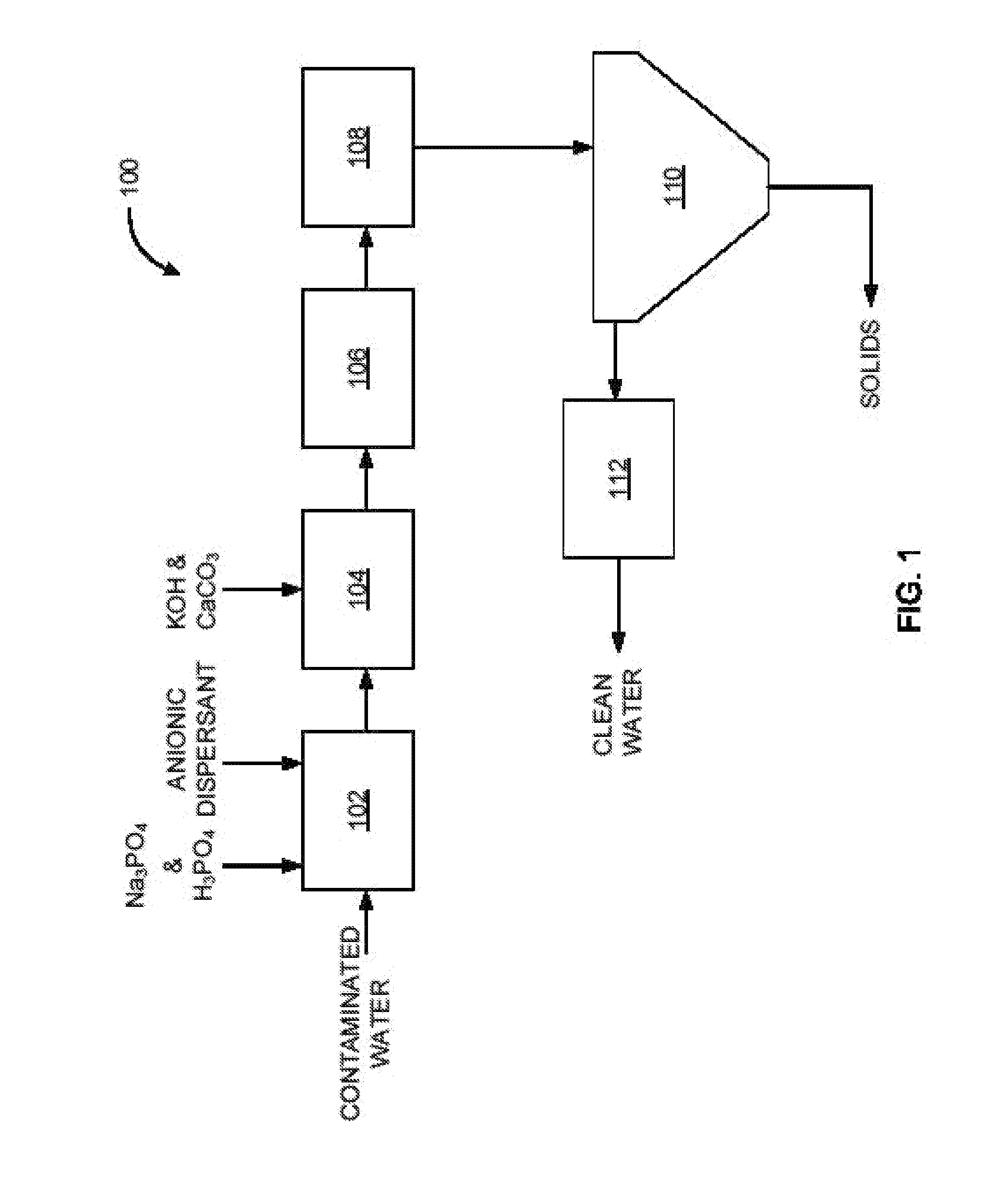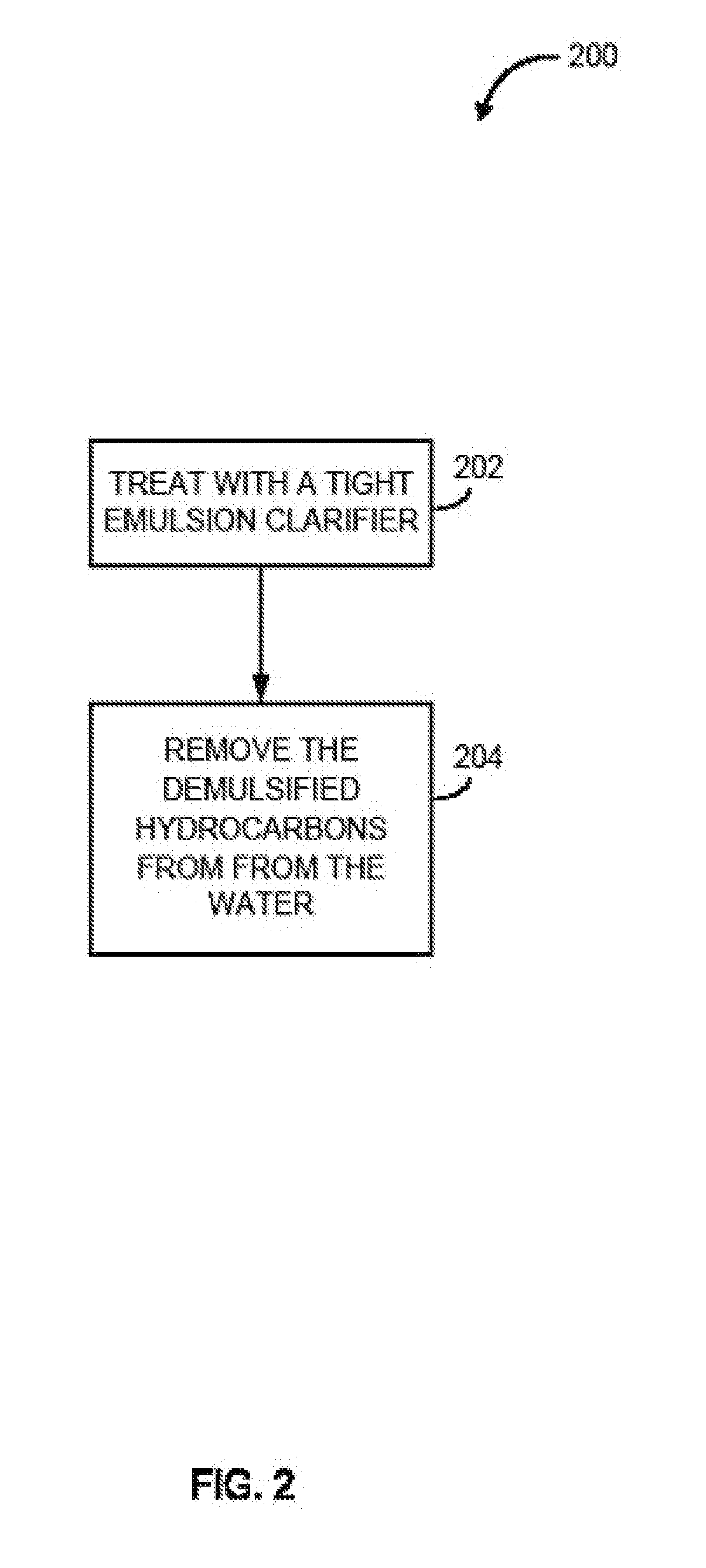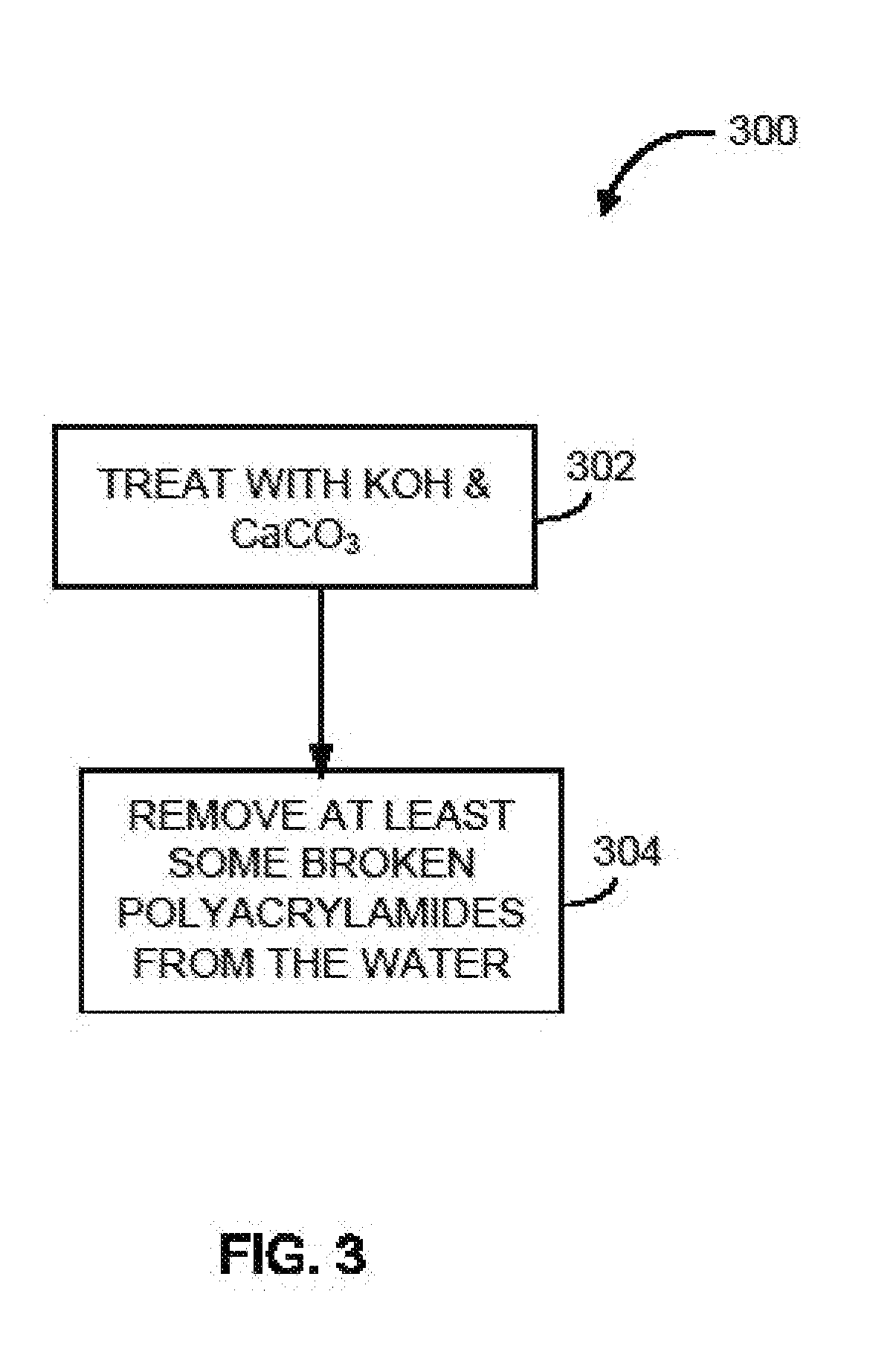Oil field water recycling system and method
a technology of oil field and water recycling, applied in the direction of water/sewage treatment by oxidation, specific water treatment objectives, separation processes, etc., can solve the problems of limiting efforts to create a cost effective treatment system that can treat or recycle the spectrum of possible produced water streams
- Summary
- Abstract
- Description
- Claims
- Application Information
AI Technical Summary
Benefits of technology
Problems solved by technology
Method used
Image
Examples
examples
[0133]In one example, contaminated water was ran through a system 100 according to FIG. 1. The system 100 was ran utilizing the following compounds at the listed amounts in the appropriate tanks as described above:
Tightly emulsified clarifier100 ppmPhosphoric acid and sodium phosphate200 ppmPotassium Hydroxide (45%)0.25%Calcium hydroxide (5% solution)0.25%Coagulant 60 ppmFlocculant (0.20% solution)0.25%Hydrochloric acid0.20%
Measurements were taken of the contaminated water fed into system 100. Measurements were taken of the water after treatment with system 100. Table 1 below lists the measurements from the contaminated water and from the water after treatment with system 100.
TABLE 1ContaminatedAfterGeneral ParametersWaterTreatmentpH6.47.5Electrical Conductivity2640028400Total Dissolved Solids (180)1970019800Solids, Total Dissolved (Calc)1620020300Total Suspended Solids10828TurbiditySulfate Reducing Bacteria>100,0001-10Alkalinity, Total (As CaC03)847857Hardness, Calcium / Magnesium687...
PUM
| Property | Measurement | Unit |
|---|---|---|
| diameter | aaaaa | aaaaa |
| weight ratio | aaaaa | aaaaa |
| temperatures | aaaaa | aaaaa |
Abstract
Description
Claims
Application Information
 Login to View More
Login to View More - R&D
- Intellectual Property
- Life Sciences
- Materials
- Tech Scout
- Unparalleled Data Quality
- Higher Quality Content
- 60% Fewer Hallucinations
Browse by: Latest US Patents, China's latest patents, Technical Efficacy Thesaurus, Application Domain, Technology Topic, Popular Technical Reports.
© 2025 PatSnap. All rights reserved.Legal|Privacy policy|Modern Slavery Act Transparency Statement|Sitemap|About US| Contact US: help@patsnap.com



